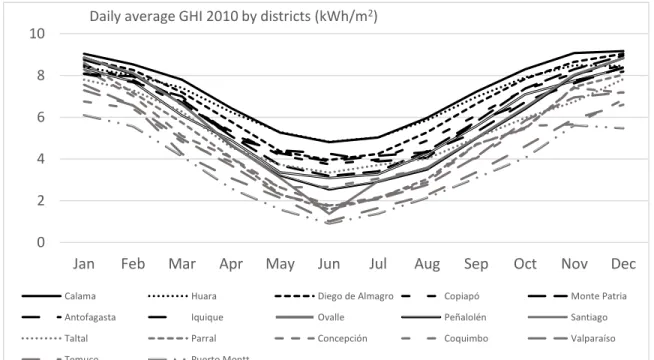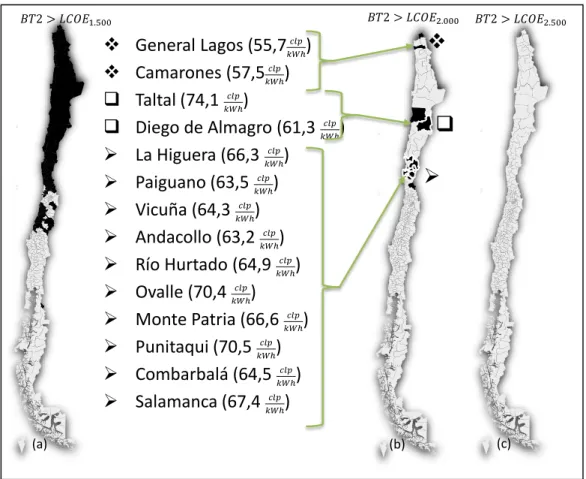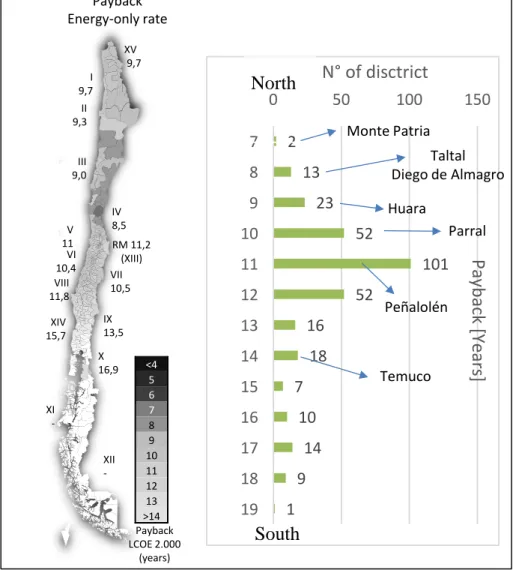PV installation on building rooftops and façades in Chile : technical and economic potential
Texto completo
Figure




Documento similar
Methodology is based on combining compactness and density at building level and at urban fabric scale and it is applied to the case of the periphery of Murcia city, in south-
Note that, in stable conditions, either the service rate is equal to the sending rate, or the service rate is smaller than the sending rate and the transmission queue
Electricity is a major cost factor in the production of chlorine, and the chlorine industry accounts for about 1 % of the total European energy consumption of 3,319 TWh with
The expansionary monetary policy measures have had a negative impact on net interest margins both via the reduction in interest rates and –less powerfully- the flattening of the
Jointly estimate this entry game with several outcome equations (fees/rates, credit limits) for bank accounts, credit cards and lines of credit. Use simulation methods to
In our sample, 2890 deals were issued by less reputable underwriters (i.e. a weighted syndication underwriting reputation share below the share of the 7 th largest underwriter
In the case of constant technical biased change, growth rate of relative prices are constant, and therefore, it is also constant the pace at which labor moves from agriculture to
Note that an equal sharing of the total cost may imply that some of the agents can be charged a cost that is greater than their direct cost to the source, c ii , and, in this
![Fig. 1-5: Optimal PV mounting in flat rooftops in Santiago: a) orientation at N, S, W, E and b) SW, NW, NE and SE 0100200300400500600700800Power [W] HourGHI 5,7 kWh/day 2,08 MWh/yrE3,1 kWh/day1,12 MWh/yr W 3,1 kWh/day 1,12 MWh/yrS1,4 kWh/day0,5 MWh/](https://thumb-us.123doks.com/thumbv2/123dok_es/7294391.445914/27.918.167.810.172.510/fig-optimal-mounting-rooftops-santiago-orientation-power-hourghi.webp)




